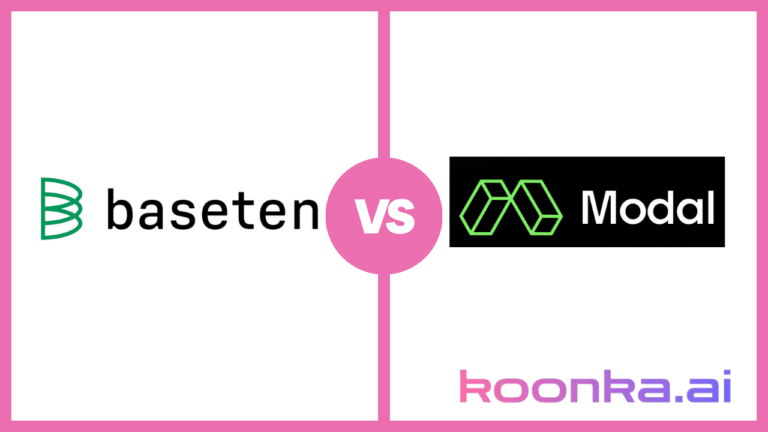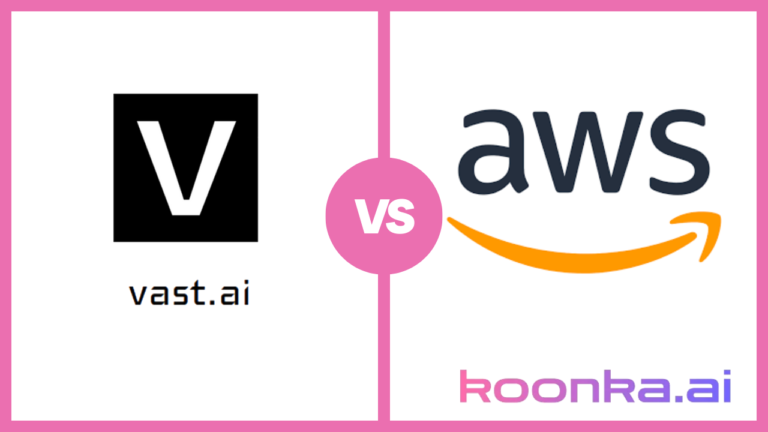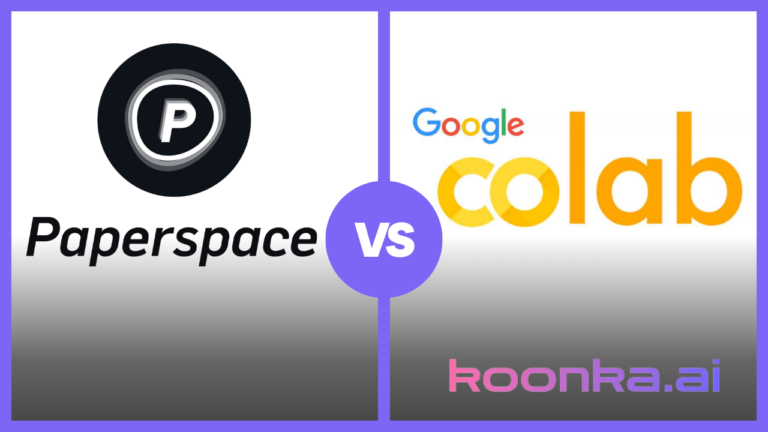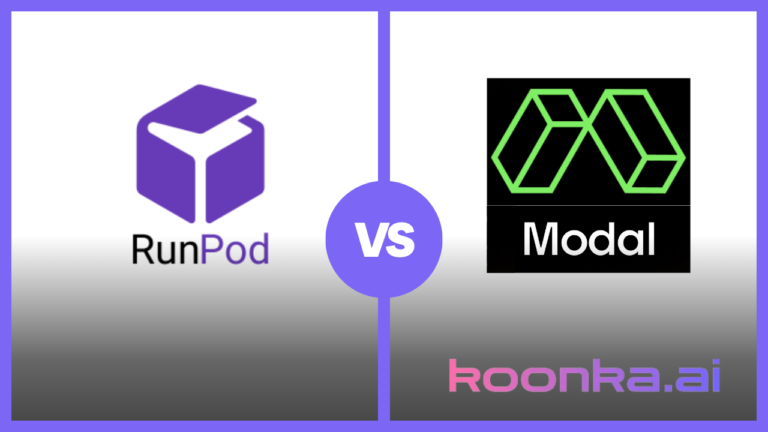Amazon EC2 G4 vs G5: Which GPU Instance Is Right for You?

AWS doesn’t mess around with high-performance GPU instances, and if you’re eyeing the EC2 G4 and G5 instances, you’ve probably got some heavy-duty projects on your hands. These two instances are built for demanding workloads like machine learning inference and real-time graphics rendering. But when you pit them against each other, which one is actually the better choice?
The G4 has built a rep as a cost-effective workhorse, while the G5 boasts next-level performance, handling 3x the workload in certain use cases. Whether you’re crunching data for natural language processing or building graphics-heavy applications, understanding the differences between EC2 G4 vs G5 is key to getting the most out of AWS. So, let’s dig into the details and help you decide which instance fits your needs best.
Affiliate Disclosure
We are committed to being transparent with our audience. When you purchase via our affiliate links, we may receive a commission at no extra cost to you. These commissions support our ability to deliver independent and high-quality content. We only endorse products and services that we have personally used or carefully researched, ensuring they provide real value to our readers.
Table of Contents
Amazon EC2 G4 vs G5: The Key Difference
The main difference between EC2 G4 and G5 is the GPU and performance. G4 has T4 or V520 GPUs, for cost-effective graphics and machine learning inference while G5 has A10G GPUs, for large-scale machine learning training and advanced graphics rendering. However, G4 is the cheaper option, for smaller workloads.
CUDO Compute offers powerful, dedicated GPU servers with no hidden fees, delivering more cost-effective performance than AWS. Sign up now!
For more information about their services, please watch this short video:
AWS EC2 G4 vs G5: Detailed Comparison
They both are good for ML inference, real-time video rendering, and gaming but they are very different in terms of performance, pricing, and hardware.
Let’s dive into the details, pricing, GPU, and use cases.
GPU Models: NVIDIA T4 and A10G vs AMD Radeon Pro V520
The main difference between G4 and G5 instances comes down to the GPUs they offer.
G4dn Instances: NVIDIA T4 GPUs

G4dn instances come with NVIDIA T4 GPUs, based on the NVIDIA Turing architecture. The T4 GPU is a general-purpose card for various cloud workloads such as ML inference, graphics rendering, and small-scale ML training.
NVIDIA T4 GPU Features:
- Turing Architecture: Built with Tensor Cores and RT Cores for both graphics and ML workloads.
- Multi-Precision Computing: Supports multiple ML precisions like FP32, FP16, INT8 and INT4. Great for ML inference workloads.
- Cost-Efficiency: T4 GPUs are optimized for low-cost ML training and inference. They can reduce ML inference costs by up to 20x compared to general-purpose CPUs.
G4dn Instance Sizes with NVIDIA T4 GPUs:
- Instances range from g4dn.xlarge with 1 GPU and 16 GB of memory to g4dn.metal, which comes with 8 GPUs and 384 GB of memory.
- For example, the g4dn.metal offers 8 NVIDIA T4 GPUs with 96 vCPUs, 384 GB of memory, and 2 x 900 GB NVMe SSD, priced at $7.824 per hour (on-demand).
Best Use Cases for G4dn Instances:
- Machine Learning Inference: These instances are great for real-time inference where fast response is critical, such as speech recognition, image classification, and object detection.
- Graphics Applications: G4dn instances also handle graphics-intensive workloads such as game streaming, rendering, and remote workstations. With support for NVIDIA RTX Virtual Workstation and CUDA NVIDIA libraries, they are popular among customers who prefer to use NVIDIA software for these use cases.
Switch to CUDO Computes’ Dedicated GPU Hosting for premium performance at a fraction of AWS’s cost, perfect for AI or scientific research. Sign up now!
G4ad Instances: AMD Radeon Pro V520 GPUs

The G4ad instance type comes with AMD Radeon Pro V520 GPUs and 2nd generation AMD EPYC processors, targeting customers who want price-efficient performance for graphics-intensive applications.
Key Features of AMD Radeon Pro V520 GPUs:
- Price-Performance Advantage: G4ad instances offer up to 45% better price performance for graphics applications when compared to G4dn instances.
- Graphics-Focused Workloads: V520 GPUs are optimized for graphics-intensive tasks such as game streaming, video rendering, and remote workstations. They provide a strong price advantage in these scenarios, especially for customers leveraging OpenGL, DirectX, and Vulkan APIs.
G4ad Instance Sizes with AMD Radeon Pro V520 GPUs:
- Ranges from g4ad.xlarge (1 GPU, 16 GB memory) to g4ad.16xlarge (4 GPUs, 256 GB memory).
- The g4ad.16xlarge instance, for example, offers 4 AMD Radeon Pro V520 GPUs, 64 vCPUs, and 2.4 TB NVMe SSD, priced at $3.468 per hour (on-demand).
Best Use Cases for G4ad Instances:
- Graphics Workloads: G4ad instances are designed for users focused on remote graphics workstations, game streaming, and graphics rendering. If you require cost-effective hardware for video rendering or streaming, these instances shine.
- Game Streaming and Rendering: These instances excel in handling workloads for customers who need to render complex graphics in real time but at a lower cost than what G4dn provides.
Get access to NVIDIA and AMD GPUs at CUDO Compute, ideal for AI, machine learning, and rendering tasks, at a lower price than AWS. Sign up now!
G5 Instances: NVIDIA A10G Tensor Core GPUs

The G5 instances are the newest generation of GPU-powered EC2 instances, equipped with NVIDIA A10G Tensor Core GPUs. These instances outperform the G4dn instances by a significant margin.
Key Features of NVIDIA A10G GPUs:
- Enhanced Machine Learning Capabilities: G5 instances offer up to 3x better machine learning training compared to G4dn instances, especially for training deep learning models.
- Ray-Tracing Cores: Equipped with more ray-tracing cores than any other AWS instance, which makes them ideal for high-fidelity graphics rendering and virtual workstations.
- High Memory: Each A10G has 24 GB of GPU memory. This can be crucial for large datasets used in both ML and graphics-intensive applications.
- Tensor Core Technology: The A10G GPUs feature third-generation Tensor Cores that allow up to 250 TOPS (Tera Operations Per Second) of performance. This is key for handling ML inference workloads at scale.
G5 Instance Sizes with NVIDIA A10G GPUs:
- The smallest G5 instance, g5.xlarge, offers 1 GPU with 16 GB of memory and is priced at $1.006 per hour (on-demand).
- The largest, g5.48xlarge, offers 8 GPUs, 192 vCPUs, 768 GB of memory, and 7.6 TB of NVMe SSD instance storage, priced at $16.288 per hour (on-demand).
Best Use Cases for G5 Instances:
- Large-Scale ML Training: G5 instances deliver up to 3.3x higher performance for ML training than G4dn instances. If you’re dealing with large ML models for natural language processing or computer vision, G5 is your go-to option.
- Graphics-Intensive Applications: The G5 instances are tailored for video rendering, gaming, and remote workstations to produce high-fidelity graphics that need to be rendered in real-time.
Need GPU power? CUDO Compute offers advanced NVIDIA GPU solutions with reliable performance and cheaper rates than AWS GPU instances. Sign up now!
Architecture and Performance
G4 Instances
Both G4dn and G4ad instances use different GPUs, but they share some underlying architecture advantages, such as NVIDIA Turing Tensor Cores for G4dn and AMD EPYC processors for G4ad.
- G4dn Architecture: With up to 8 NVIDIA T4 GPUs, 96 vCPUs, and 100 Gbps networking, G4dn instances offer solid architecture for both machine learning and graphics rendering.
- G4ad Architecture: With up to 4 AMD Radeon Pro V520 GPUs and 64 vCPUs, G4ad focuses more on graphics-intensive workloads and price efficiency, delivering up to 45% better price performance.
G5 Instances
G5 instances offer a significant leap in terms of both hardware and architecture:
- Built on NVIDIA A10G GPUs and second-generation AMD EPYC processors, G5 instances have up to 192 vCPUs and 100 Gbps networking. The Nitro System ensures maximum resource efficiency by offloading many virtualization tasks to dedicated hardware.
- The A10G GPUs feature third-generation Tensor Cores and RT Cores, which bring a noticeable improvement in ray-tracing and machine-learning tasks.
Storage and Networking
When comparing AWS EC2 G4 and G5 instances, the storage and networking differences are big, depending on the workload you need to run. Let’s dive into the storage and networking details of each so you can choose the right one for your use case.
G4dn Instances: High-Speed Networking for ML Inference and Graphics
The G4dn instances are designed for fast local storage and high networking throughput. They have up to 1.8 TB of local NVMe SSD storage. NVMe (Non-Volatile Memory Express) drives are great for workloads that need fast data retrieval and fast storage write speeds. Whether you’re running machine learning inference models or deploying remote workstations for graphics-intensive applications, the fast NVMe SSDs will handle data-intensive workloads with minimal latency.
On the networking side, G4dn instances have up to 100 Gbps of network bandwidth. This is big for applications that need large data transfers or real-time interactions, like game streaming, virtual desktops, or graphics rendering. Plus with NVIDIA T4 GPUs and this much network bandwidth, G4dn instances are a cost-effective solution for machine learning inference and smaller-scale training workloads. The high network throughput means these instances are good for workloads where low latency to data and high-speed networking are important.
G4dn instances are good for users who need a balance of fast storage and high network throughput. These are good for applications like machine learning inference, graphics rendering, and remote workstations where both storage speed and network performance are important.
With CUDO Compute, you get customizable GPU setups and private networking that’s affordable, offering more control than AWS. Sign up now!
G4ad Instances: Higher Storage, Lower Network Bandwidth
G4ad instances have more local storage than G4dn, up to 2.4 TB of local NVMe SSD storage. This makes G4ad instances great for graphics-intensive applications with larger datasets like 3D rendering, video editing, and game development. The extra storage can hold large files or complex models so performance remains smooth even with a lot of data to process. The NVMe storage means high read/write speeds which is good for graphics-heavy workloads.
However, the network bandwidth on G4ad instances is limited to 25 Gbps. This means G4ad instances aren’t as good for applications that need high-speed data transfer or real-time interactions.
Instead, they’re great for use cases where local storage performance is the focus and network throughput is secondary. This is typical for applications like remote workstations, game streaming, and rendering where high-speed storage is more important than fast external data transfer.
G4ad instances prioritize local storage over networking speed so they’re great for graphics-heavy applications that need high storage capacity and fast storage performance but don’t need high network throughput.
G5 Instances: Optimized for High-Performance Networking and Storage
G5 instances get a big boost in both storage and networking compared to the G4 family. G5 instances have up to 7.6 TB of local NVMe SSD storage so they’re the clear choice for users who need a lot of fast local storage. This storage is great for data-intensive workloads like training complex machine learning models or handling large video files for high-resolution rendering in real-time.
In terms of networking G5 instances also have up to 100 Gbps of network bandwidth so they’re a beast for applications that need both fast local storage and high-speed networking. This makes G5 instances great for machine learning training where you may need to process large datasets locally and transfer data between nodes or services at high speeds. G5’s networking is also critical for real-time video rendering where low latency and high bandwidth networking are required to maintain performance and reduce lag.
G5 instances can also handle larger and more complex machine-learning models. With the extra network bandwidth and storage, you can deploy larger datasets locally and make sure the networking infrastructure is fast enough to handle data transfer in real-time. The high-speed networking and large NVMe storage make G5 instances the best for workloads that need fast data access and large storage.
Enjoy transparent pricing and 100TB of free traffic per month with CUDO Compute, making it a better GPU hosting option than AWS. Sign up now!
Pricing Comparison
G4dn Pricing (NVIDIA T4 GPUs)
- g4dn.xlarge: $0.526/hr (on-demand)
- g4dn.12xlarge: $3.912/hr (on-demand)
- g4dn.metal: $7.824/hr (on-demand)
For those on a tighter budget looking for ML inference or graphics rendering, G4dn Nvidia GPU-based instances provide cost-effective performance.
G4ad Pricing (AMD Radeon Pro V520 GPUs)
- g4ad.xlarge: $0.379/hr (on-demand)
- g4ad.16xlarge: $3.468/hr (on-demand)
G4ad instances offer better price performance for graphics workloads, making them an excellent choice for game streaming or video rendering.
G5 Pricing (NVIDIA A10G GPUs)
- g5.xlarge: $1.006/hr (on-demand)
- g5.48xlarge: $16.288/hr (on-demand)
For ML training and graphics rendering at scale, G5 instances provide the highest performance, though at a higher cost.
Amazon EC2 G4 vs G5: The Bottom Line
Choosing between G4 and G5 instances depends largely on your specific workload requirements.
If you’re focused on cost-efficient graphics workloads and lower-scale machine learning inference, the G4dn or G4ad instances should serve you well. G4dn is your go-to for NVIDIA software ecosystems, while G4ad is better suited for cost-effective graphics rendering.
On the other hand, if you need high-end machine learning training or real-time ray-tracing graphics performance, then the G5 instances are your best option. They come with significantly more power and advanced features but at a higher cost.
Ultimately, understanding your exact needs will help you make the right choice between G4 and G5 instances.
CUDO Computes’ flexible, high-performance GPU servers allow you to scale your projects efficiently, without the AWS pricing complexity. Sign up now!







